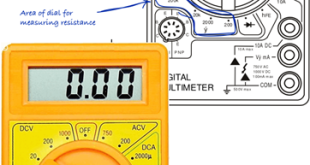What is The Light Bulb Filament
Most of us believe that after Thomas Edison – or Joseph Swan if you’re British – invented the light bulb in the 1870s it took off as a useful everyday object, and revolutionized modern lighting. However, Edison’s original model used a carbonized bamboo filament: Which was fragile and also didn’t burn that brightly. Here’s what really made the incandescent light bulb as we know it . It’s the fabulous engineering that went into creating the tungsten filaments we see in today’s bulbs. Tungsten’s perfect because its high melting point allows it to be run at high temperatures.
The higher the temperature, the more visible light emitted. The filament seems a simple thing, but let me show you how amazing it is. If we zoom in a bit you can see it’s a coil, not just a straight wire, but if we look even closer. We can see it’s a coil within a coil. The filament starts as a wire 20 inches long and about two-thousandth of an inch in diameter. The filament’s then wound into a coil with 1130 turns until it’s a bit over three inches long, and then coiled again to the three-quarters of an inch that you see in the bulb.
That’s the coiled coil I showed you. Obviously the coils enable more wire to glow, but also internal reflections within the coil can double the intensity of the light emitted. As an engineer what amazes me is the ductility needed to make these coils. Let me show you what I mean by ductile: A piece of copper has high ductility: You can bend and then return it to its original shape.
No way to do that with natural tungsten: It just snaps. To make tungsten ductile it took elegant, creative and careful work by an engineer at General Electric. William Coolidge developed a process for taking tungsten powder and making it into a wire. Just to give you an idea of the difficulty here’s an abbreviated list of the steps.
- Apply great pressure to turn tungsten powder into a fragile bar.
- Heat it to 1300 degrees Celsius and then cool with water.
- Pass a current through the tungsten while heating it to 3200 degree Celsius, & then cool again.
- Heat yet again to 1500 degree Celsius, but this time while flowing hydrogen over it.
- Pass it through a series of dies to cold work it and then hammer it.
- And then the sixth and final step: heat it and then reduce the temperature gradually while drawing it into a 1 mm diameter wire.
I know that’s a lot to take in, but take note that Coolidge used empirical observations, intuitions and past knowledge – not purely scientific knowledge of tungsten itself. One last thing. For the filament to last at high temperatures, no oxygen must contact it.
What happens if I turn on the filament without the glass envelope.
I love that. If you take a close look you see the tungsten’s now black. That’s tungsten oxide. To keep oxygen away from the filament the earliest bulb simply held a vacuum, today we fill them with argon gas. It insulates the filament and keeps it from evaporating thus allowing for even higher temperatures.
Conclusion :
Although the days of the incandescent light bulb are numbered, with newer and more efficient compact fluorescents and LEDs on the market, I find that these old light bulbs, like many old technologies, illustrate wonderfully creative engineering and problem solving.
As found on Youtube








